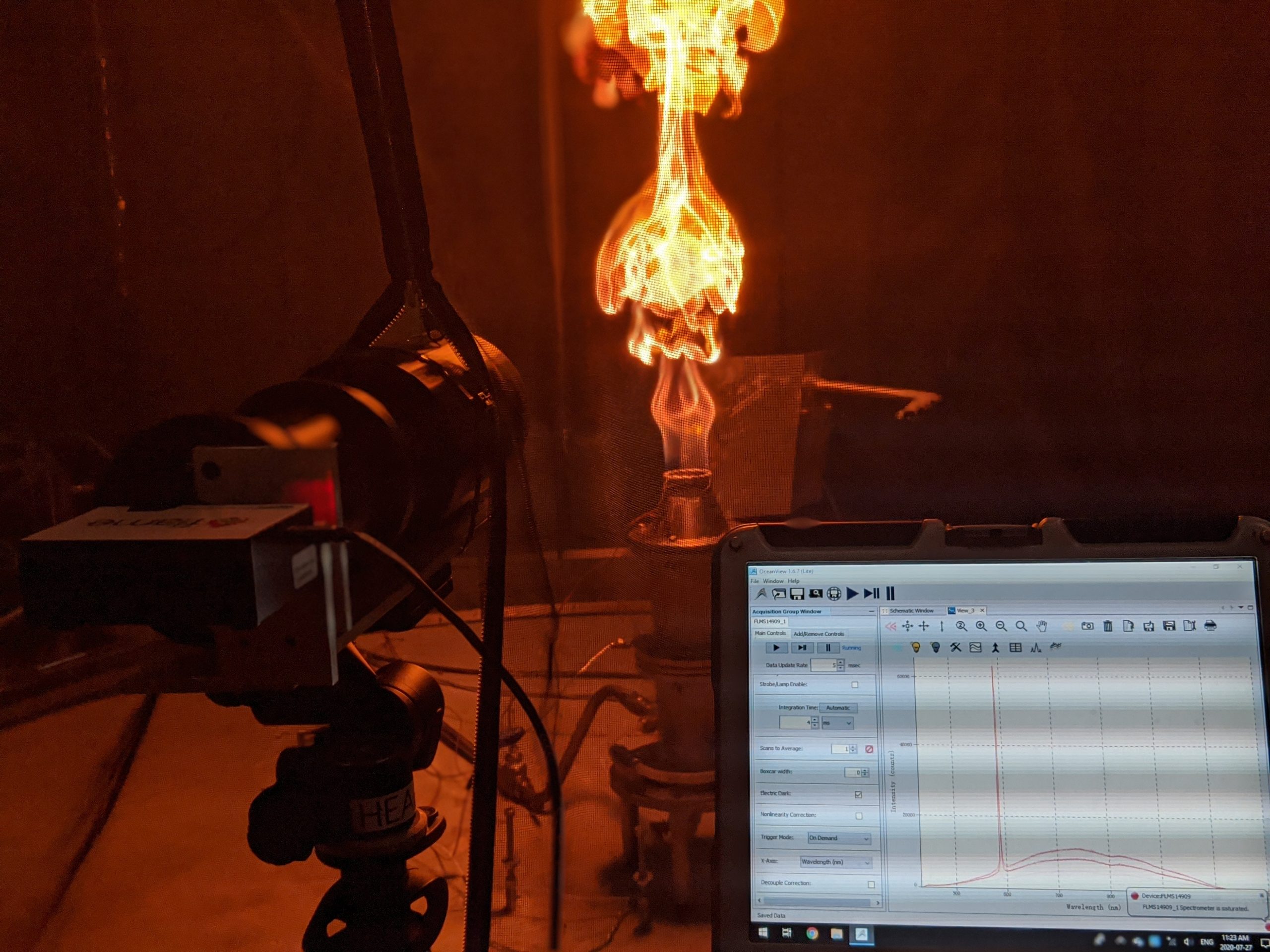Remote Detection of Liquid Carry-Over into Flare Systems
Wells that are typically found at upstream oil and gas facilities produce of a mixture of crude oil, natural gas, flowback fluids and formation water. It is common practice to use separation vessels to separate the fluids into oil, water and gas streams. The oil and water streams may be directed to their respective storage tanks for further processing or transport whereas the gas stream is commonly redirected to be flared, burning off a variety of harmful emissions found in unburned natural gas.
Unfortunately, it is believed this separation process commonly leaks fluids into flare gas streams which may result in entrained aerosols being burning off along with the natural gas. Flowback water separated at oil and gas facilities is often very salty with high concentrations of sodium (Na) and potassium (K) ions suggesting that if flowback water aerosols were carried into a flare system, these species are the most likely to affect flare emissions and should be the easiest to detect. Recent studies have investigated the effects of introducing sodium chloride (NaCl) and potassium chloride (KCl) laden aerosols into lab-scale flare flames finding, in some cases, a significant increase in the levels of carbon monoxide, benzene and particulate emissions being released into the atmosphere.
Using a custom spectrometer system to detect atomic emission signatures of Na and K in flare flames, field measurements of 95 flares in North Dakota, Saskatchewan, and Ecuador detected evidence of liquid carry-over in 73% of the sites visited, confirming that some amount of liquid carry-over is a common occurrence across the industry.
This unexpected result may have profound implications for our understanding of the potential impacts of flare emissions globally.
